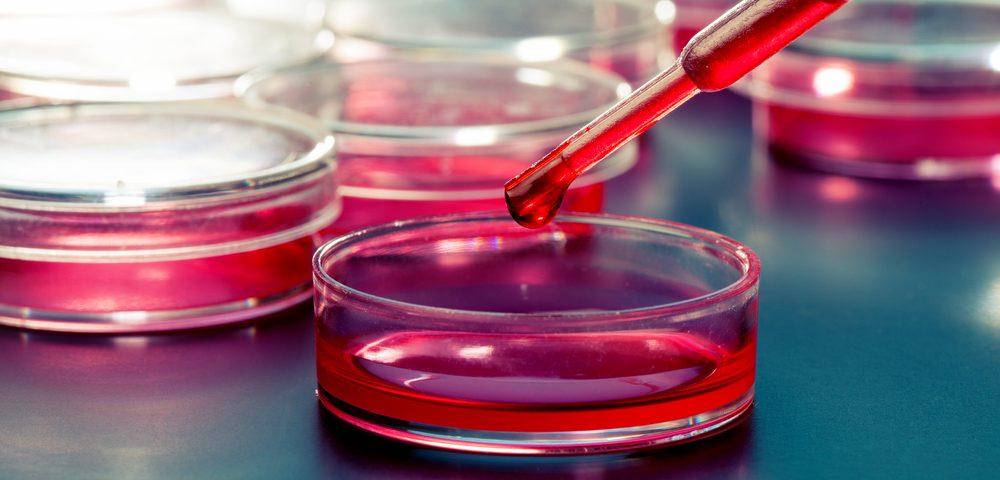Researchers have developed an ultrasensitive diagnostic device, a kind of “lab-on-a-chip,” that quickly detects cancer using a droplet of blood, potentially allowing for an easier, cheaper, and more timely cancer diagnosis.
The device is described in the study, “Ultrasensitive detection of circulating exosomes with a 3D-nanopatterned microfluidic chip,” which was published in Nature Biomedical Engineering.
The idea behind the chip is to detect cancer-related exosomes in the blood. Exosomes are little packages of cellular content — like proteins and DNA — that cells secrete to send messages to each other.
“Basically, tumors send out exosomes packaging active molecules that mirror the biological features of the parental cells. While all cells produce exosomes, tumor cells are really active compared to normal cells,” Yong Zeng, a professor at the University of Kansas and one of the study authors, said in a press release.
Because tumor cells release exosomes into the blood, testing for them could, at least in theory, be done as part of routine bloodwork, which might allow tumors to be diagnosed more quickly. This is especially important for cancers such as ovarian cancer, which doesn’t typically cause symptoms until the tumor has already started to advance and spread.
The idea of detecting cancer exosomes in the blood isn’t new, but it’s been difficult to find a way to confidently implement these tests in clinics for two main reasons: first, figuring out exactly how to distinguish cancer exosomes from normal ones is a challenge, since both false-negatives and false-positives could have serious consequences. Second, detecting exosomes easily and cheaply is a major hurdle.
In the study, researchers focused on this second hurdle. They were specifically focused on the use of microfluidics to enhance exosome detection.
Basically, in order for an exosome to be detected, it needs to physically make contact with a sensor in a chip. However, the sample that goes into the chip includes water, which can actually block the exosomes from making contact with the sensors. This makes the chips less sensitive, so their results are less reliable, and larger samples are needed.
To circumvent this problem, the researchers engineered a chip with sensors based on a herringbone pattern — a series of interlocking tiles made to resemble to the bones of a fish such as a herring. They also included nanopores (essentially, tiny holes formed by proteins).
Zeng compares the nanopores to a thousand kitchen sinks that drain water, allowing the sensors to more effectively detect the exosomes. “If you have a sink filled with water and many balls floating on the surface, how do you get all the balls in contact with the bottom of the sink where sensors could analyze them? The easiest way is to drain the water,” he explained.
The chip was so sensitive that it was able to detect exosomes in samples as small as two microliters of liquid. A microliter is a unit of volume equal to one-millionth of a liter.
Furthermore, in a preliminary test of 20 ovarian cancer patients and 10 healthy control subjects, the researchers singled out a few markers that might be used to effectively identify ovarian cancer exosomes. For example, their chip detected the protein folate receptor alpha at much higher levels in the exosomes from ovarian cancer patients than in exosomes from the blood of healthy volunteers.
However, this was a proof-of-concept study and not about this chip’s usefulness for early diagnosis since the tested patients had already been diagnosed. Still, the researchers are hopeful that this new technology will be easy to test and apply in wider practice.
“What we created here is a 3D nanopatterning method without the need for any fancy nanofabrication equipment — an undergraduate or even a high school student can do it in my lab. This is so simple and low-cost it has great potential to translate into clinical settings,” Zeng said, adding that, “almost all mammalian cells release exosomes, so the application is not just limited to ovarian cancer or any one type of cancer. We’re working with people to look at neurodegenerative diseases, breast and colorectal cancers, for example.”

